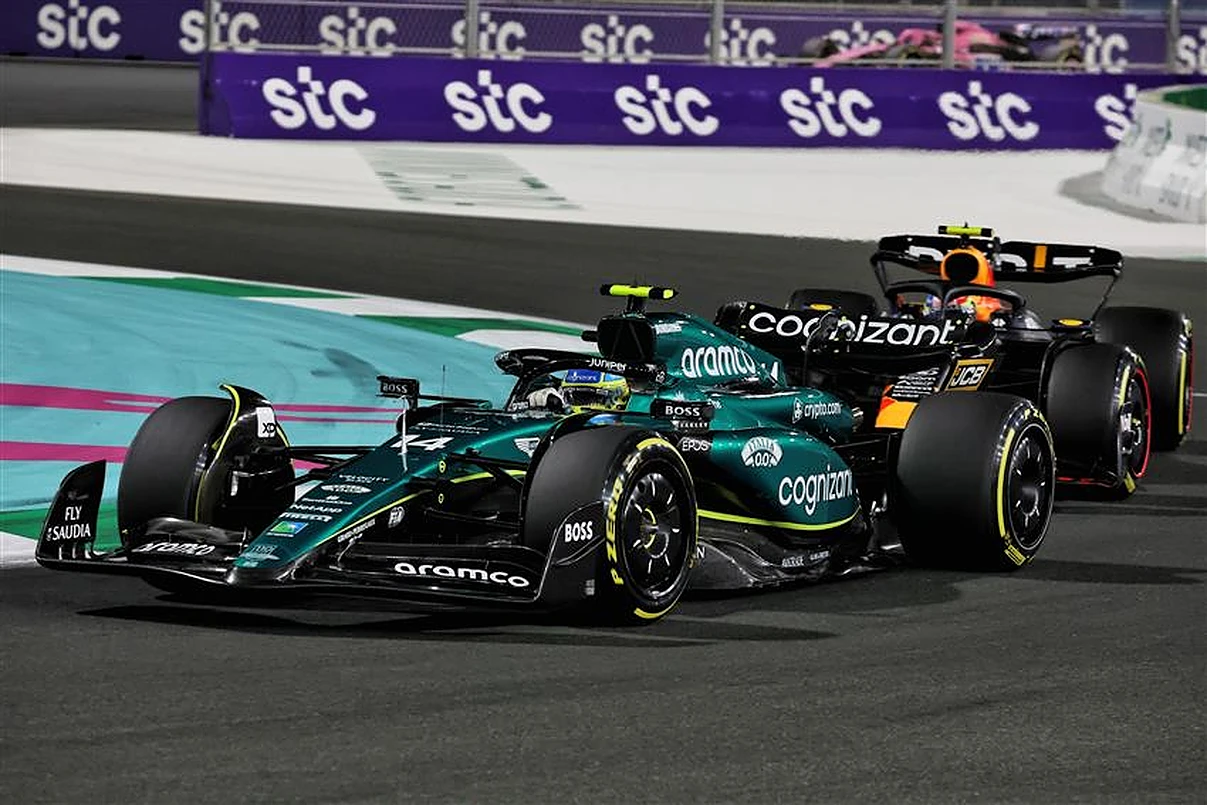Having started the season as a formidable contender, Aston Martin’s competitive edge has dulled as they slipped to fourth place on the track this season.
Speculations have surfaced, indicating that the FIA’s intervention concerning flexi-wings in Azerbaijan could potentially be linked to the team’s decline.
In the early stages of the current Formula 1 season, Aston Martin’s Fernando Alonso dazzled with a series of impressive P3 finishes, coupled with a strong showing in qualifying sessions.
The Silverstone-based team’s performance, however, began to wane as the season progressed, facing challenges from rival teams and their own struggles to maintain pace.

Want to work in Formula 1? Browse the latest F1 job vacancies
Rumours have emerged suggesting that this dip in form might be tied to the FIA’s actions concerning flexi-wings.
As reported by Motorsport.com, teams can exploit the concept of “flexi-wings” to gain speed by designing a front wing that remains strong during static garage tests yet flexes in a controlled manner at high speeds on the track.
The FIA, in its role to ensure fairness and adherence to regulations, has been monitoring this issue.
According to the report, “the FIA tightened its analysis of the designs and expressed some dissatisfaction with the construction of several front wings, which were said to be more deflected than they would have liked.”
While all teams’ front wings were deemed compliant with FIA tests and there are no allegations of illegal behaviour, wings that exhibit excessive bending during high-speed manoeuvres potentially violate Article 3.2.2 of the technical regulations.
This regulation mandates that aerodynamic components influencing a car’s performance must remain rigid and immobile in relation to their frame of reference, ensuring consistent aerodynamic behaviour.
Aston Martin has been mentioned in connection with this flexi-wing saga, specifically in the context of the Azerbaijan Grand Prix.
Observations of onboard footage from Alonso’s car in earlier races reportedly showed noticeable deflection at high speeds on straights.
The FIA, reportedly, intervened around the time of the Azerbaijan GP, with a focus on addressing the construction of the front wing.
The aim was to eliminate potentially advantageous design aspects that could have been described as “clever solutions.”
Some teams were “informally informed” by the FIA about the need for adjustments.
READ: Eddie Jordan reminded about his unpaid debt
Around the same period, Aston Martin introduced a new front wing design that featured one less bracket.
It’s worth noting that when questioned about the team’s performance downturn, Alonso attributed it to the introduction of revised Pirelli tires at the British Grand Prix.
The Spaniard emphasised that this change affected multiple teams, including Red Bull.
“It’s not only us, I think Red Bull has clearly been hit with those tires,” he commented, highlighting the broader implications of the tire change on multiple teams’ performances.

